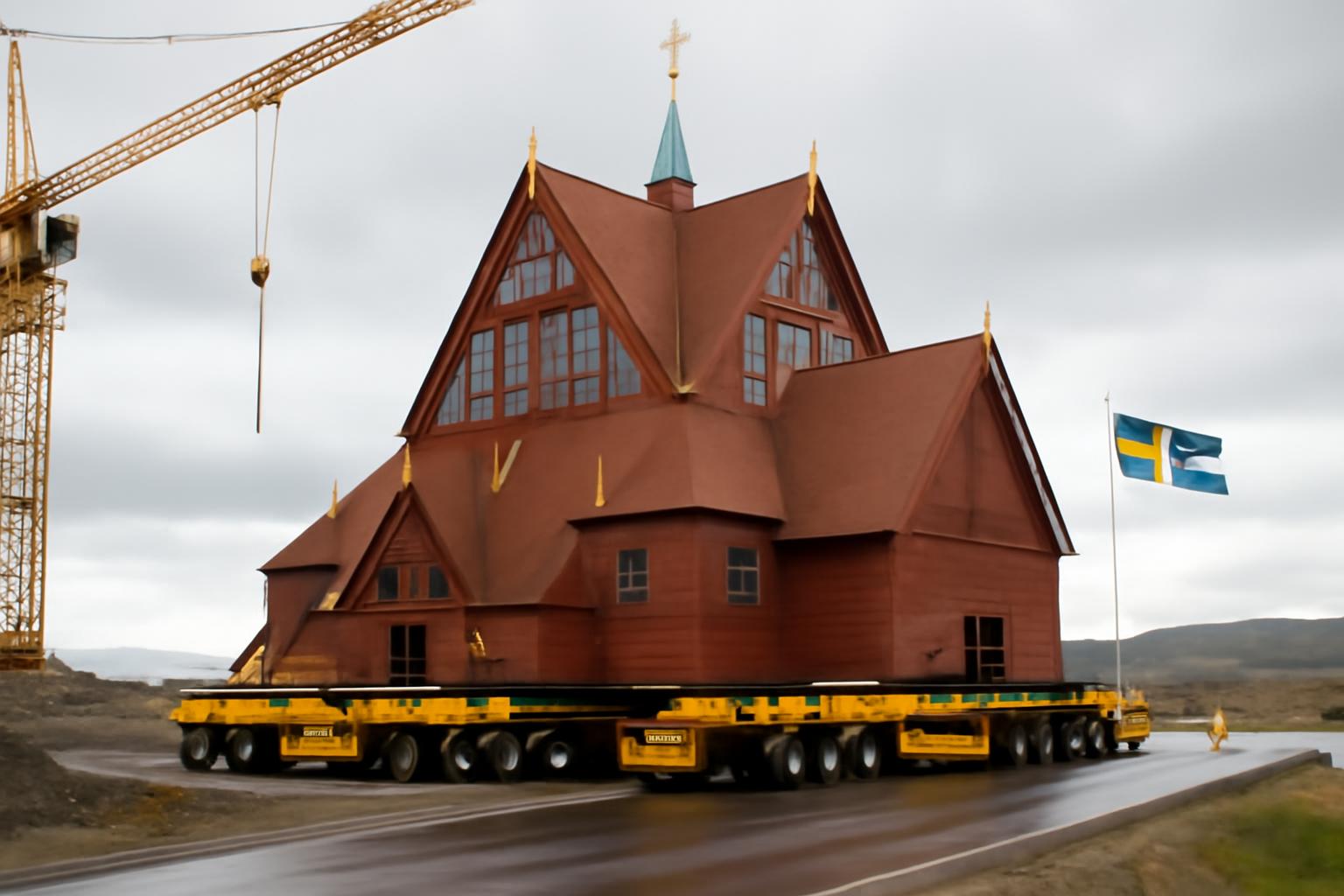Kiruna’s wooden church, a temple weighing 670 tons, has been carried across five kilometers to a redesigned center, perched on remote-controlled platforms while the mine beneath the town continues to subside. The move, deliberate and steady rather than swift, unfolds along straighter stretches with more ease than on curves. The cost runs to roughly 45 million euros, and the event was sanctified with a royal reception and a service attended by thousands. The church, which will be closed for the remainder of the year as work continues, sits at the heart of a broader and more unsettling project: LKAB’s plan to relocate or remove thousands of buildings to salvage a city literally looming over a shrinking underlying resource. The mood has shifted from mourning to acceptance, a testament to communal resilience, even as the old site fades into history and a new center takes shape.
The extraordinary feat of moving a church like a ship of memory through the landscape of a community is a powerful parable about adaptation under pressure. It is also a stark reminder that the social order we inhabit is not the product of elegant designs alone, but of countless small decisions guided by local knowledge working within a framework of institutions. In Kiruna, the decisive force is not a single grand plan but a network of tacit understandings—property rights, kinship, religious life, municipal routines, the rhythms of a mine—that together compose a functioning city. The relocation of the entire downtown—an ambition with a horizon stretching to 2035—exposes the tension between the necessity of centralized, coordinated action and the humility required by dispersed knowledge.
What enables such a transformation is not only engineering prowess or ceremonial swagger but the stubborn perseverance of ordinary people who must live with the consequences of choices made at a distance. The spectacle of royal hospitality and a public service for three thousand is not evidence of the superiority of central design; it is, in a sense, a ceremonial acknowledgment that a community’s life cannot endure if the facts on the ground are ignored. Yet I would caution against imagining that this relocation is a triumph of enlightened central planning. The fact remains that the value of the project derives from harnessing the local, often inaccessible information—the precise geography of subsidence, the sentimental and functional roles of specific streets and squares, the timing of construction and reconstruction—that no centralized planner could fully possess.
Freedom does not demand inertia in the face of reality; it demands institutions capable of responding to reality. Kiruna’s path shows what happens when a community treats its assets, memories, and daily rhythms as dynamic apprenticeships rather than fixed monuments. The church’s relocation preserves a shared symbol at the center of social life, a touchstone of continuity amid upheaval. The price tag is high, the process slow, and the destination uncertain. But if the broader aim is to maintain a living, cooperative civilization rather than to freeze it in place, then the people of Kiruna deserve admiration for embracing change without surrendering their sense of belonging.
Let this be a reminder that the essence of liberty is not the absence of constraint but the freedom to adapt within a framework of rules that allows dispersed knowledge to operate. When a town must be relocated to survive, the correct response is not to flood the scene with commands from above but to cultivate the conditions in which local knowledge, voluntary cooperation, and institutional prudence can do their work. The moving church, the quiet sermons, the fika after the service, and the patient, measured progress on straight paths all testify to a republic of improvisation within a society committed to order. If Kiruna can survive a canyon of subsidence without losing its soul, it will be because its people chose to steward both continuity and change—an embodiment, perhaps, of Hayek’s faith that real order emerges not from grand designs but from the humble, stubborn work of individuals in a world of imperfect knowledge.
